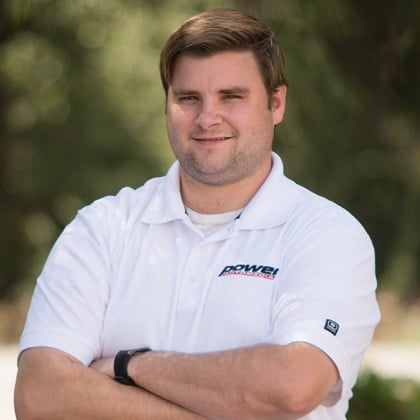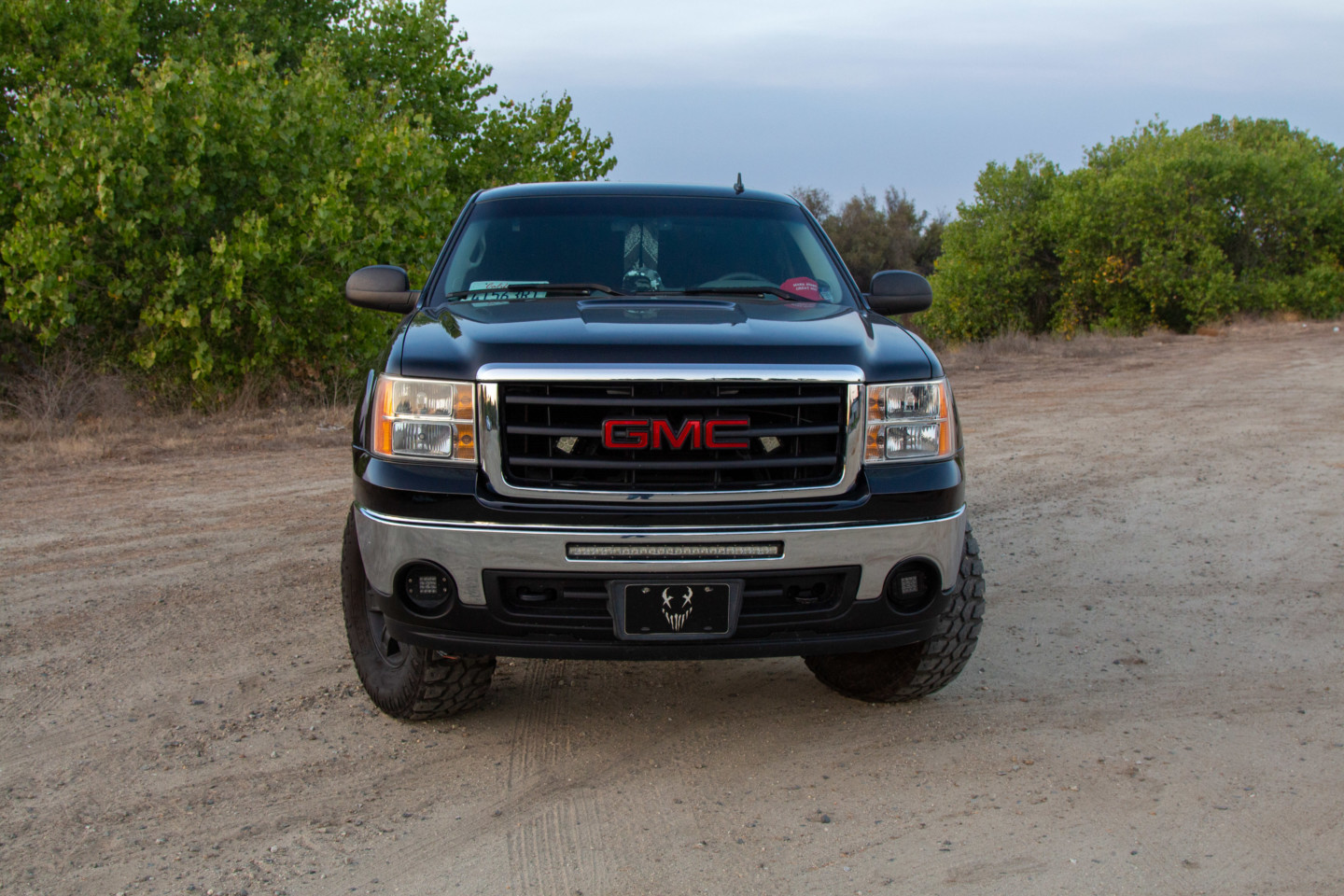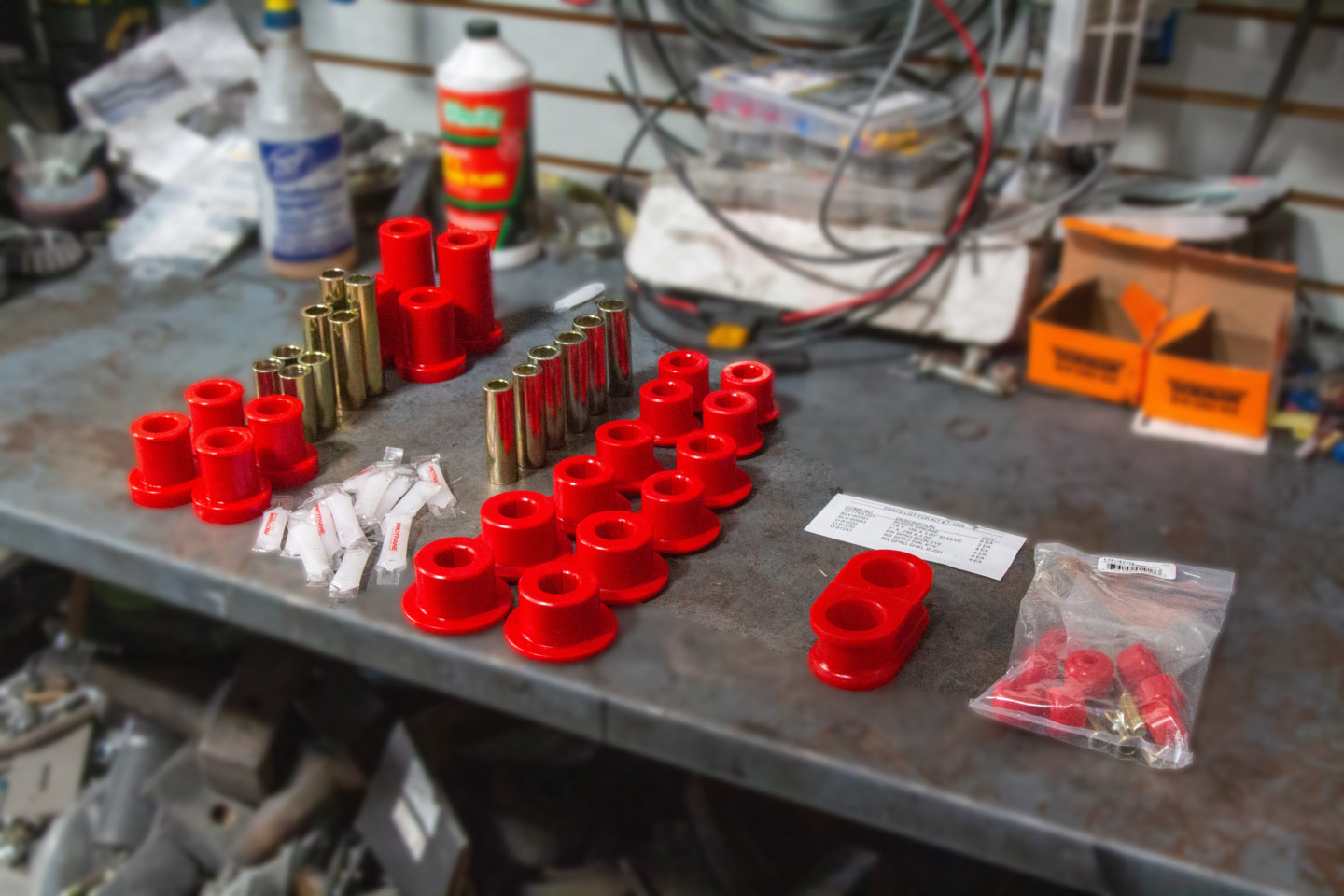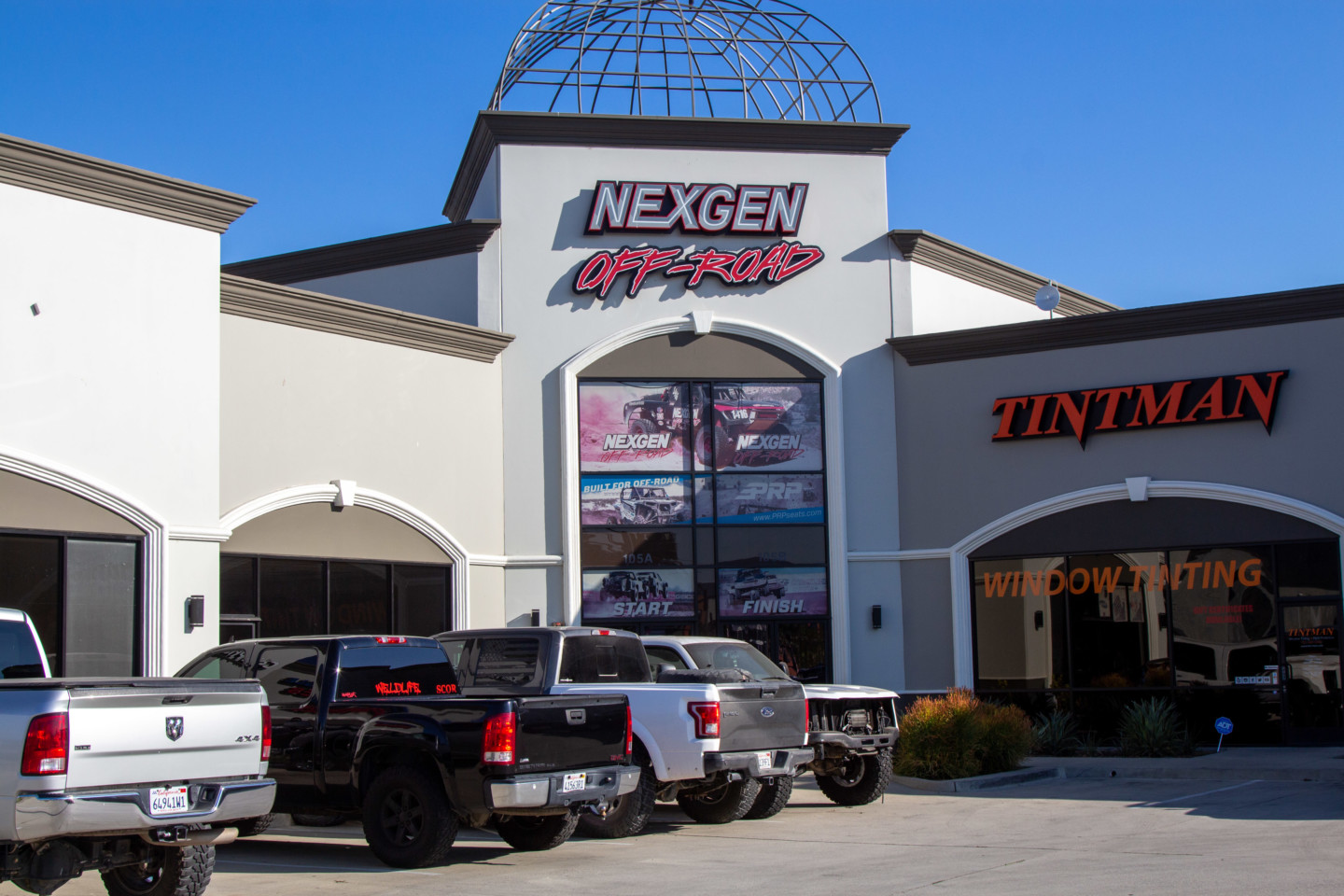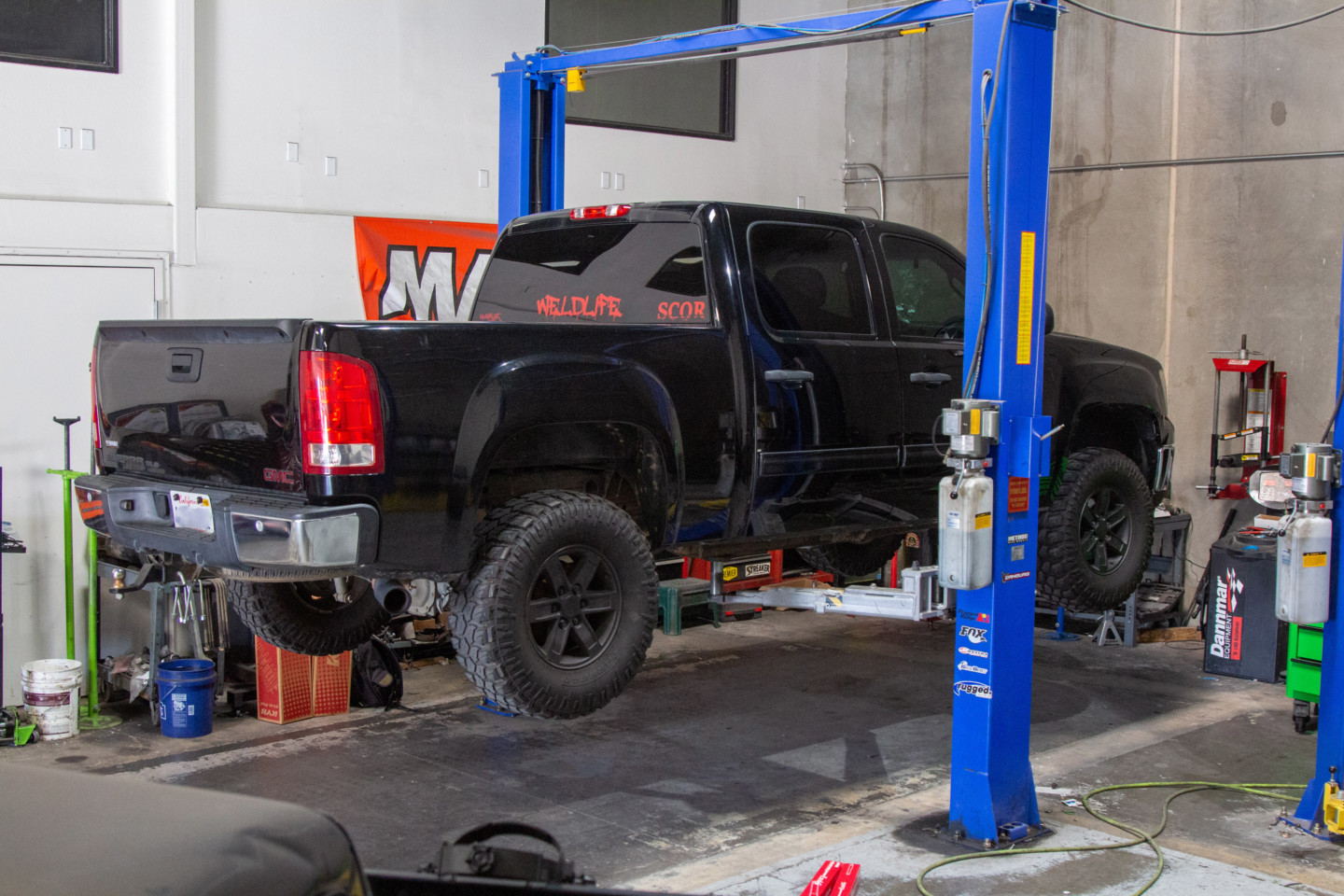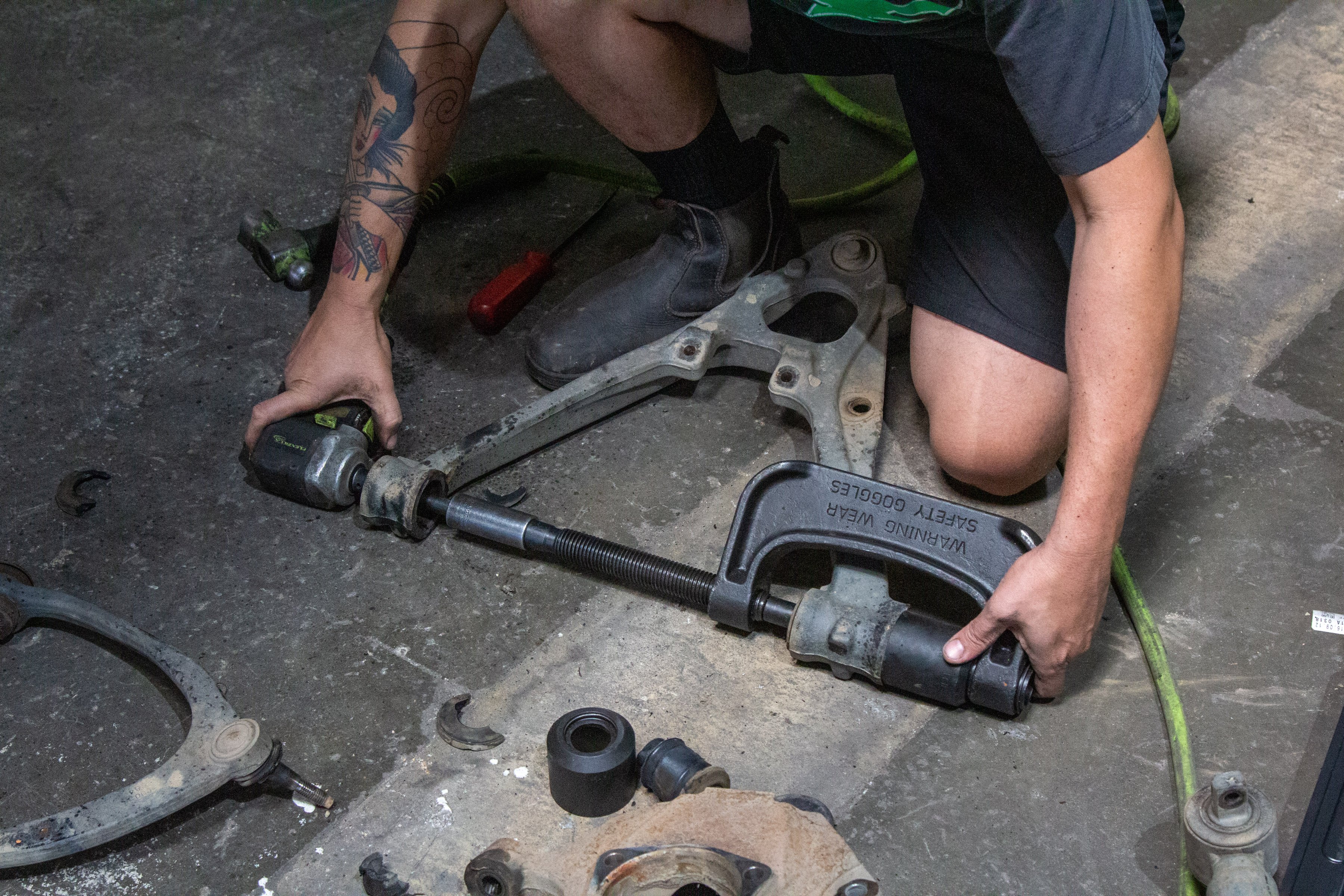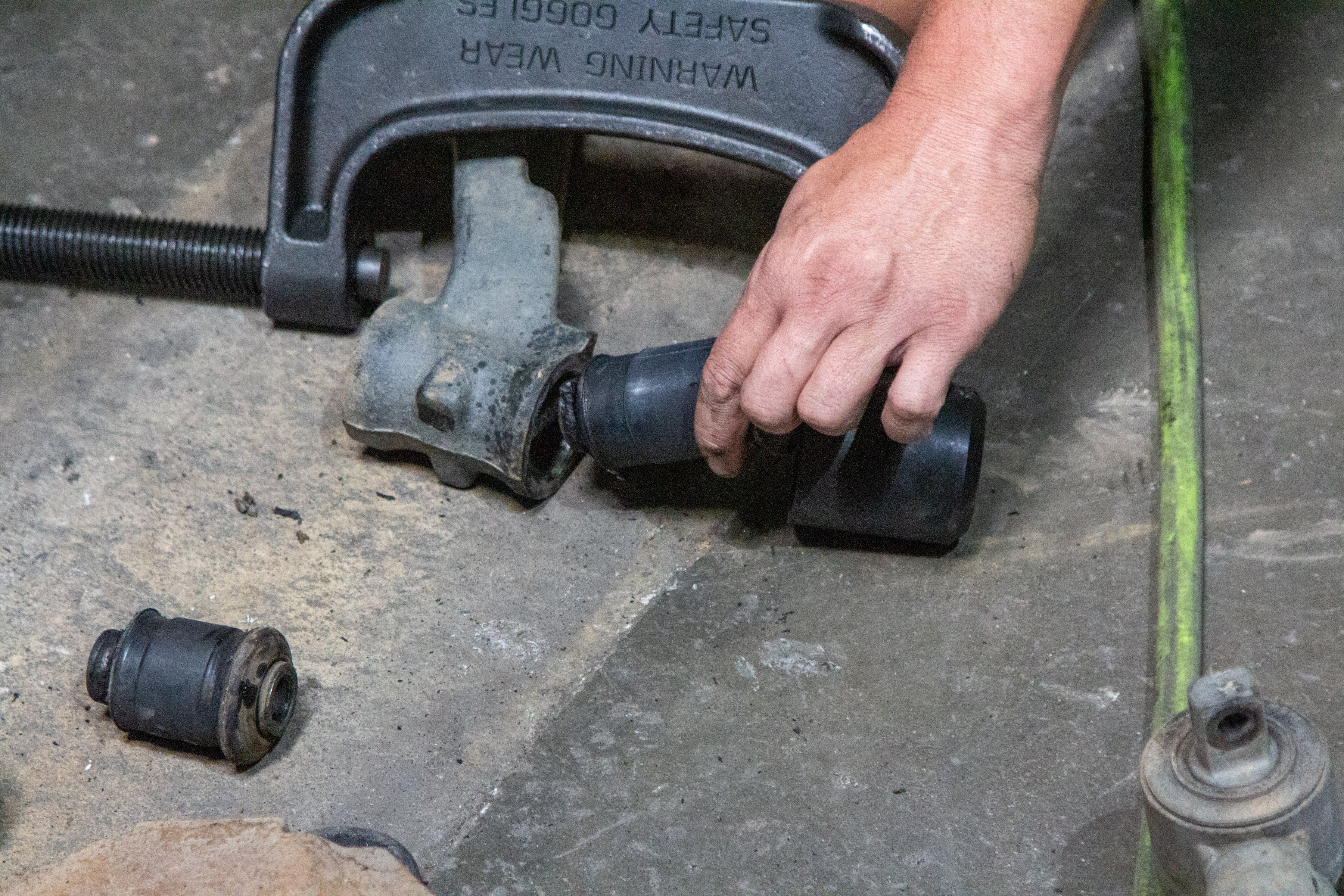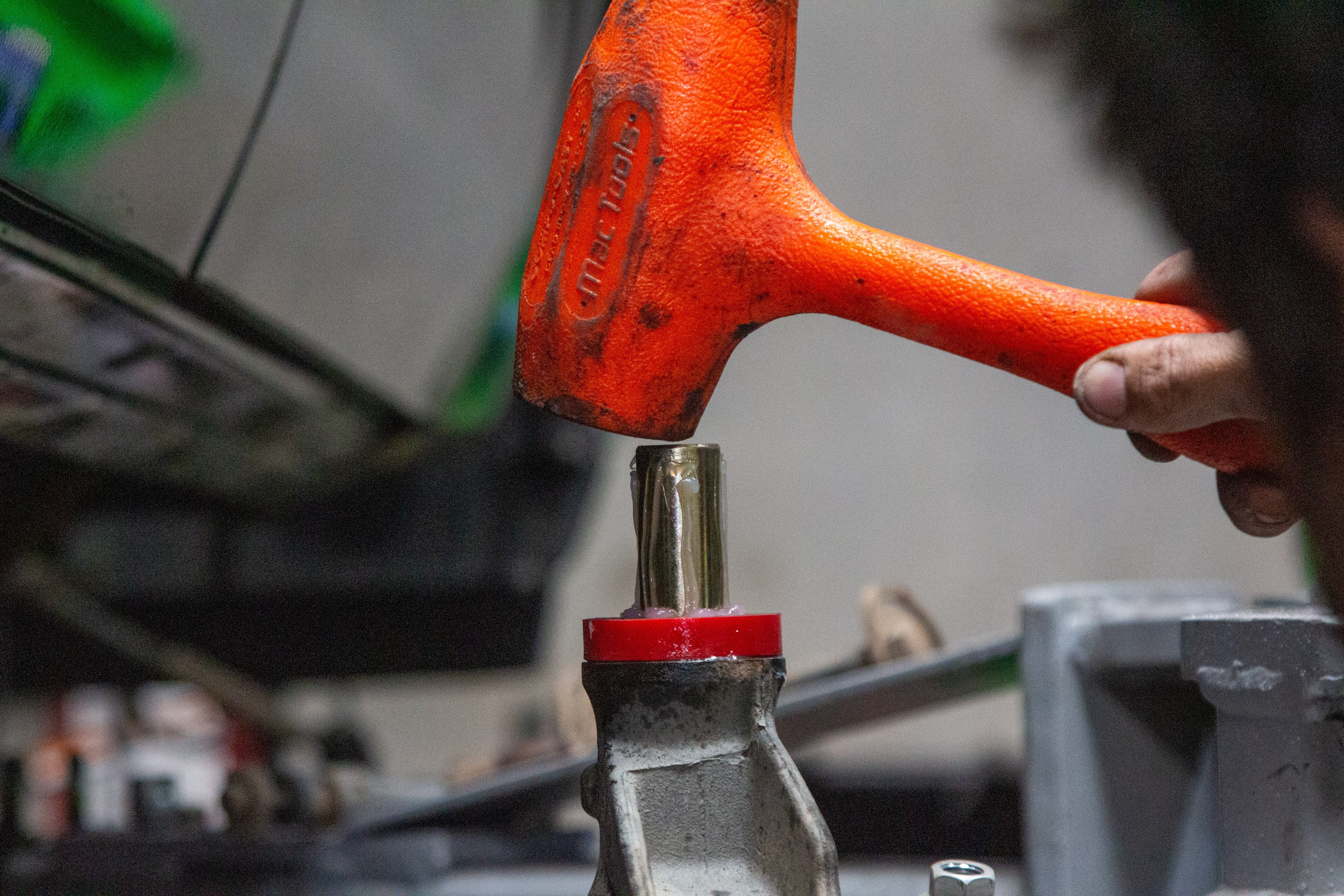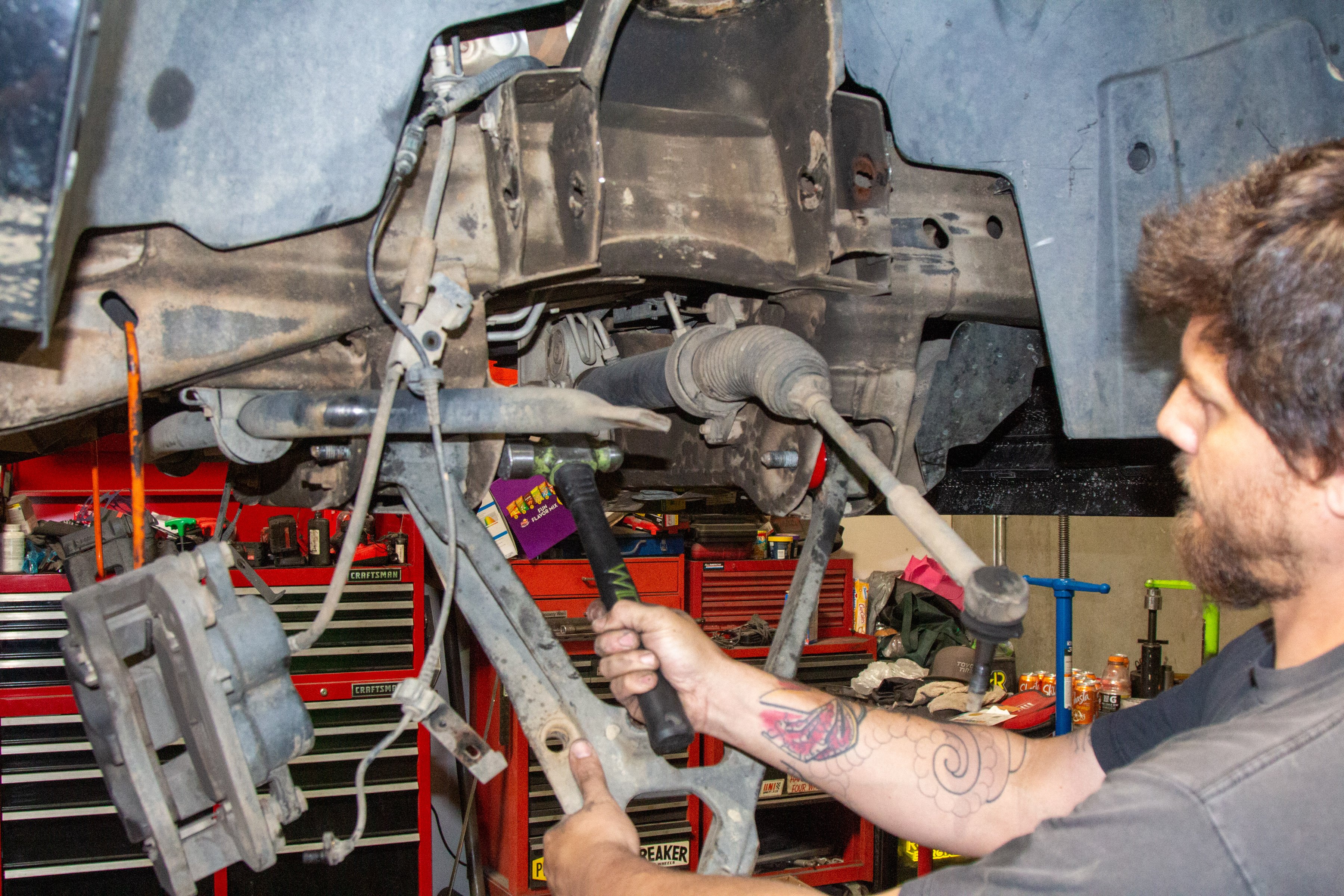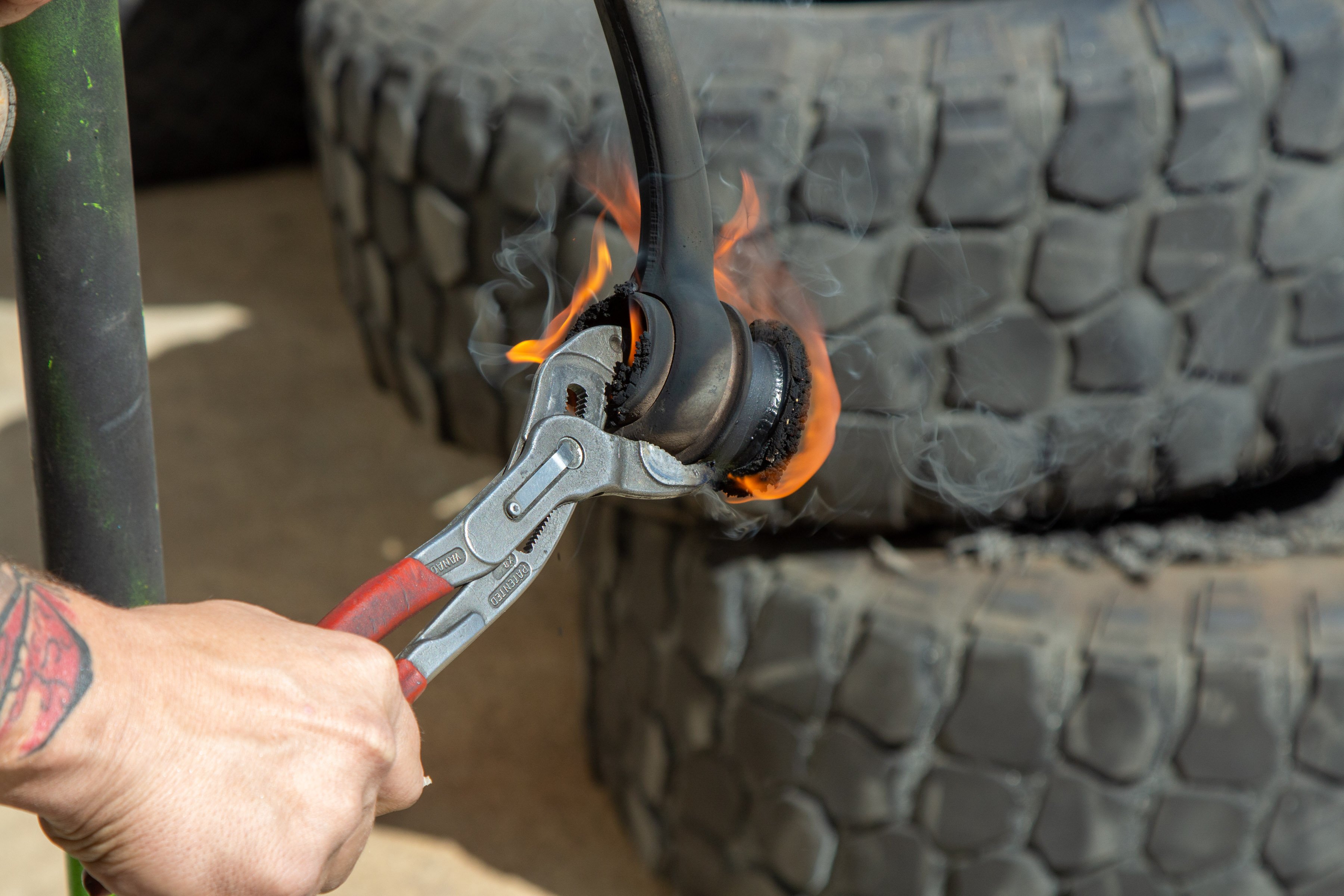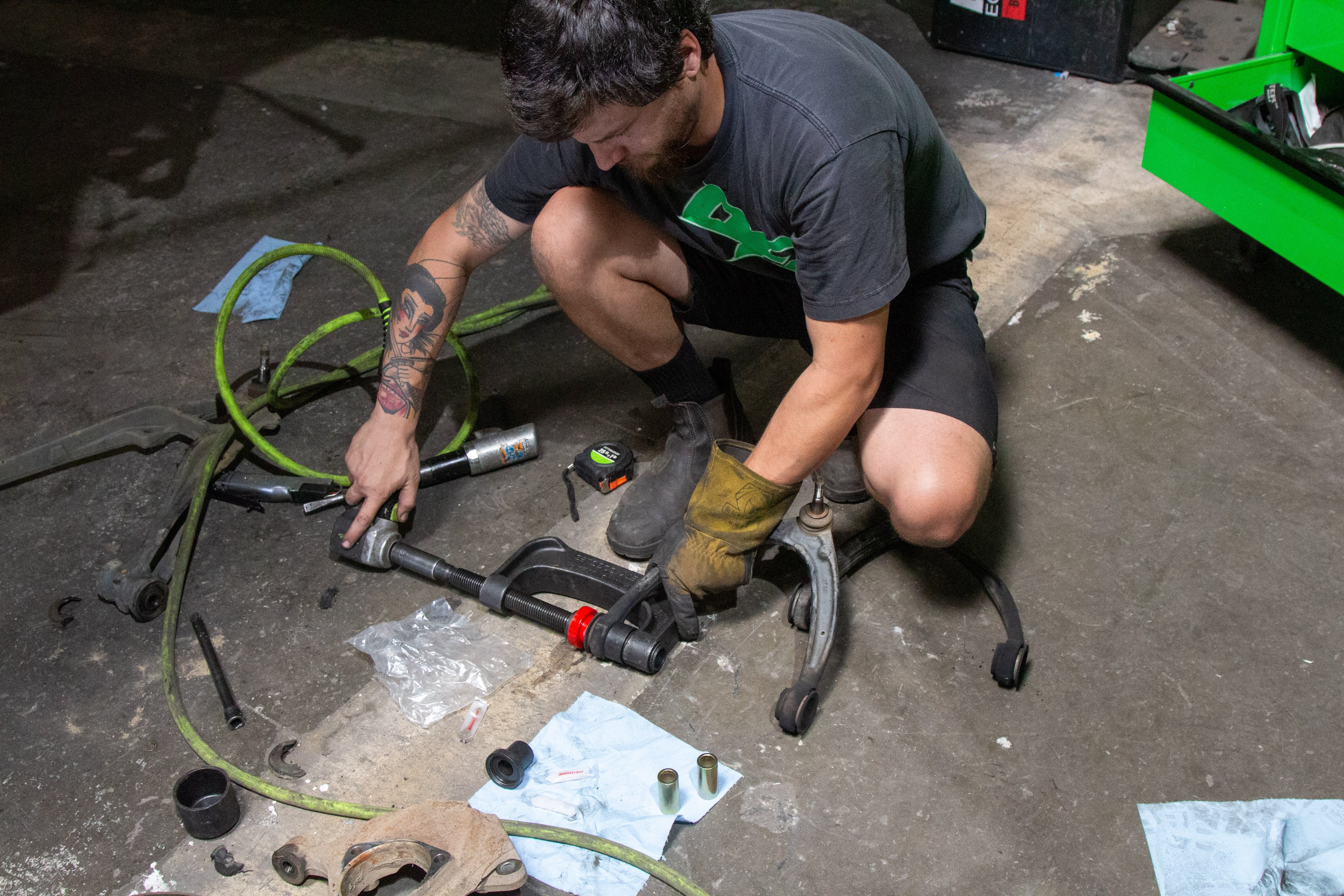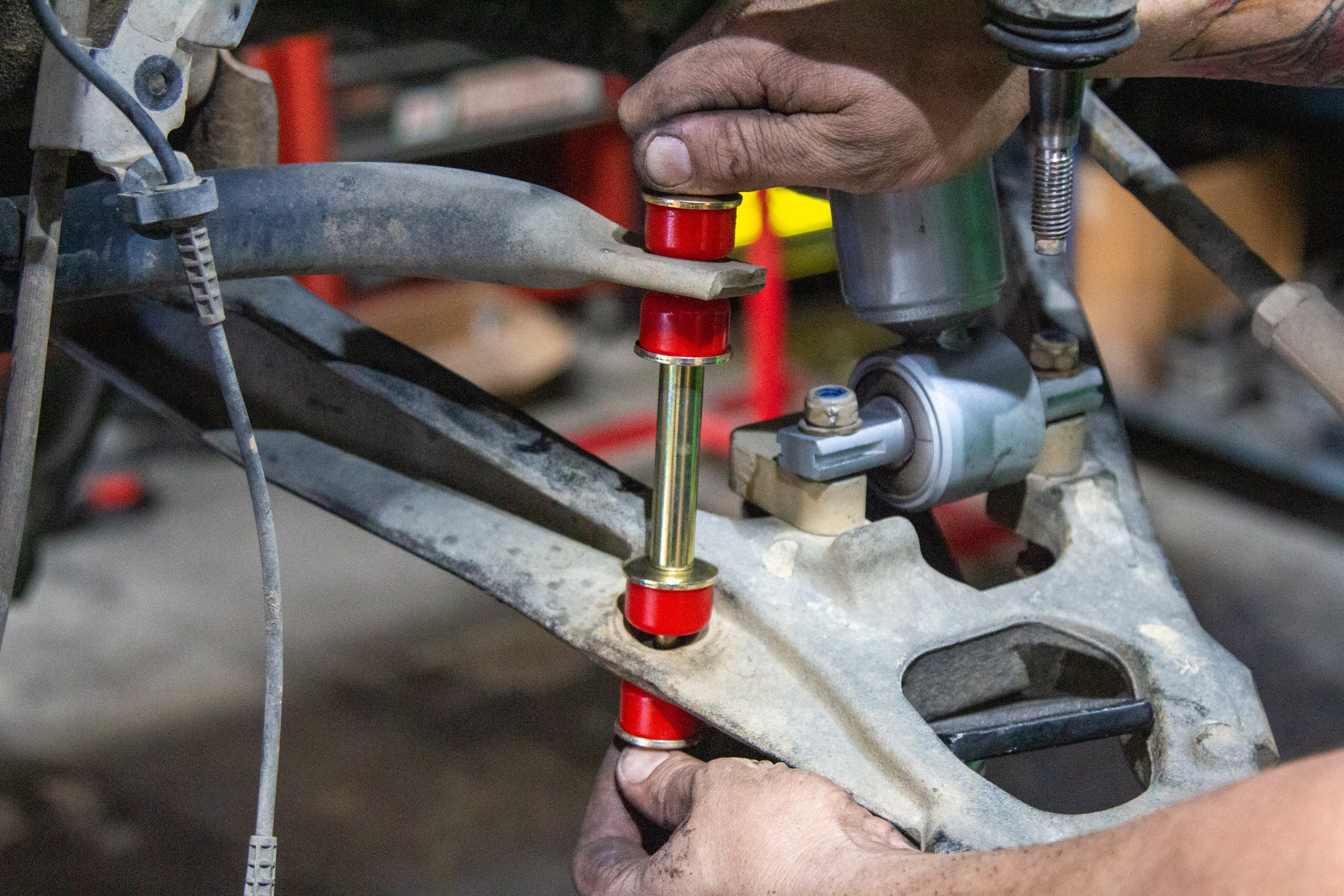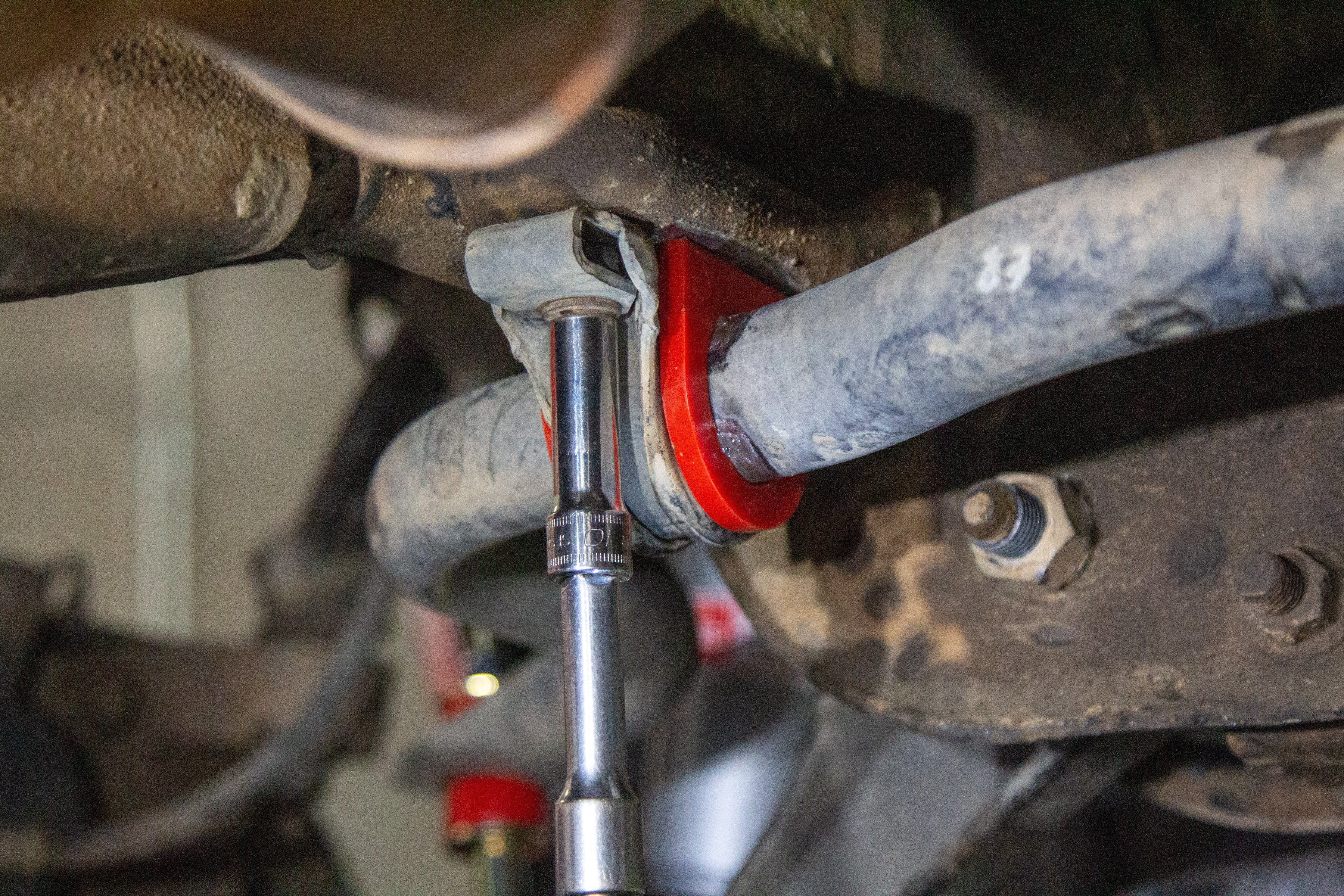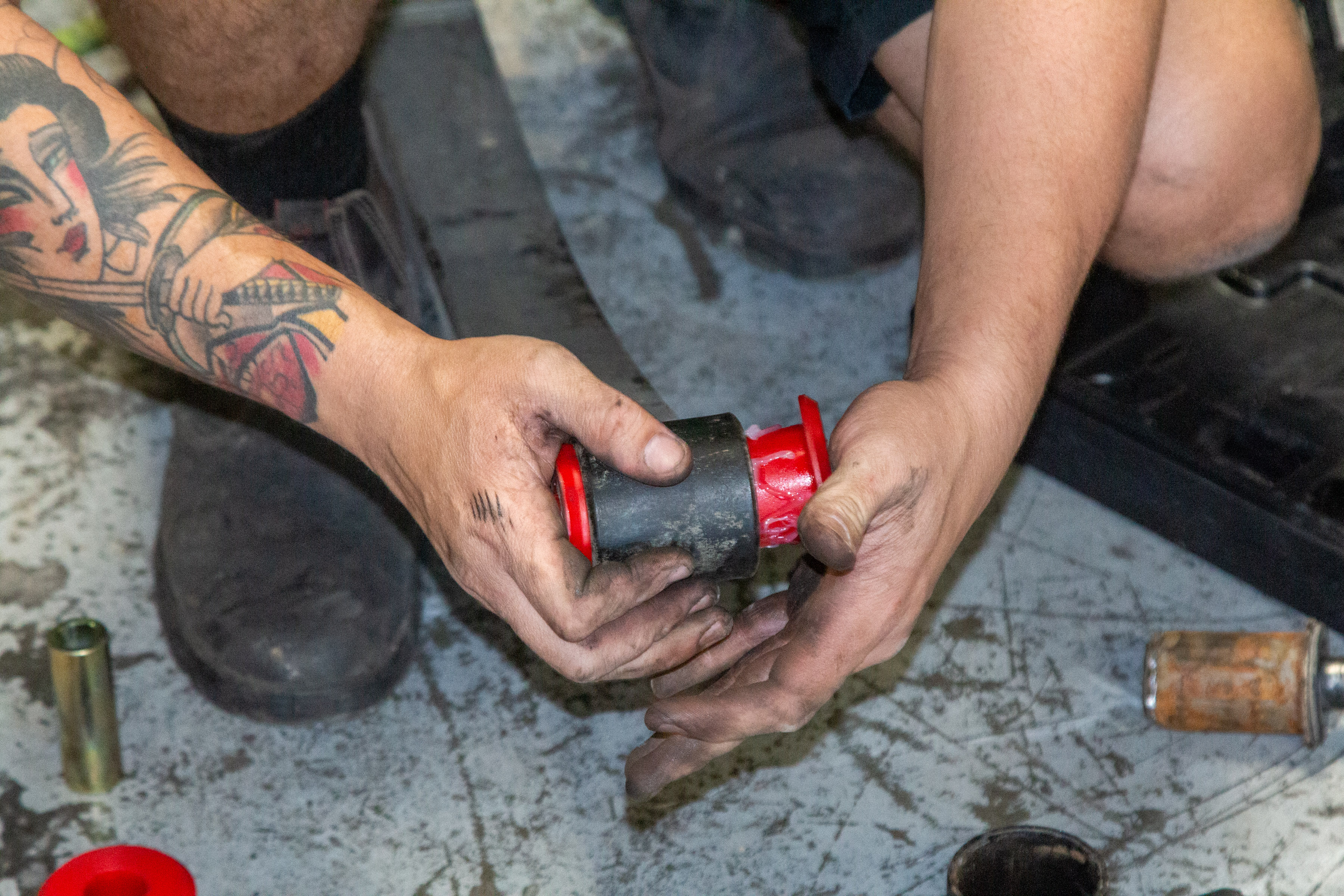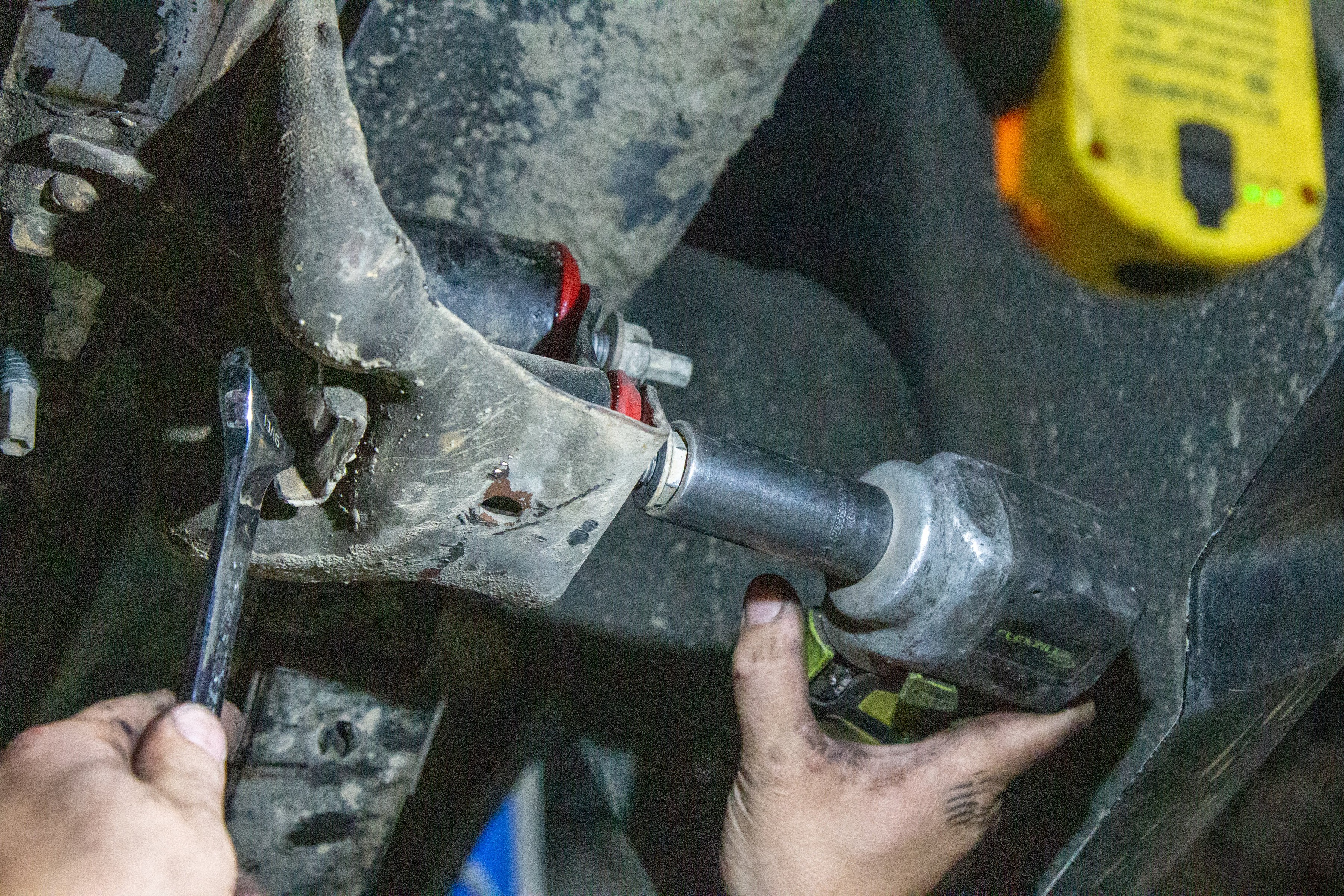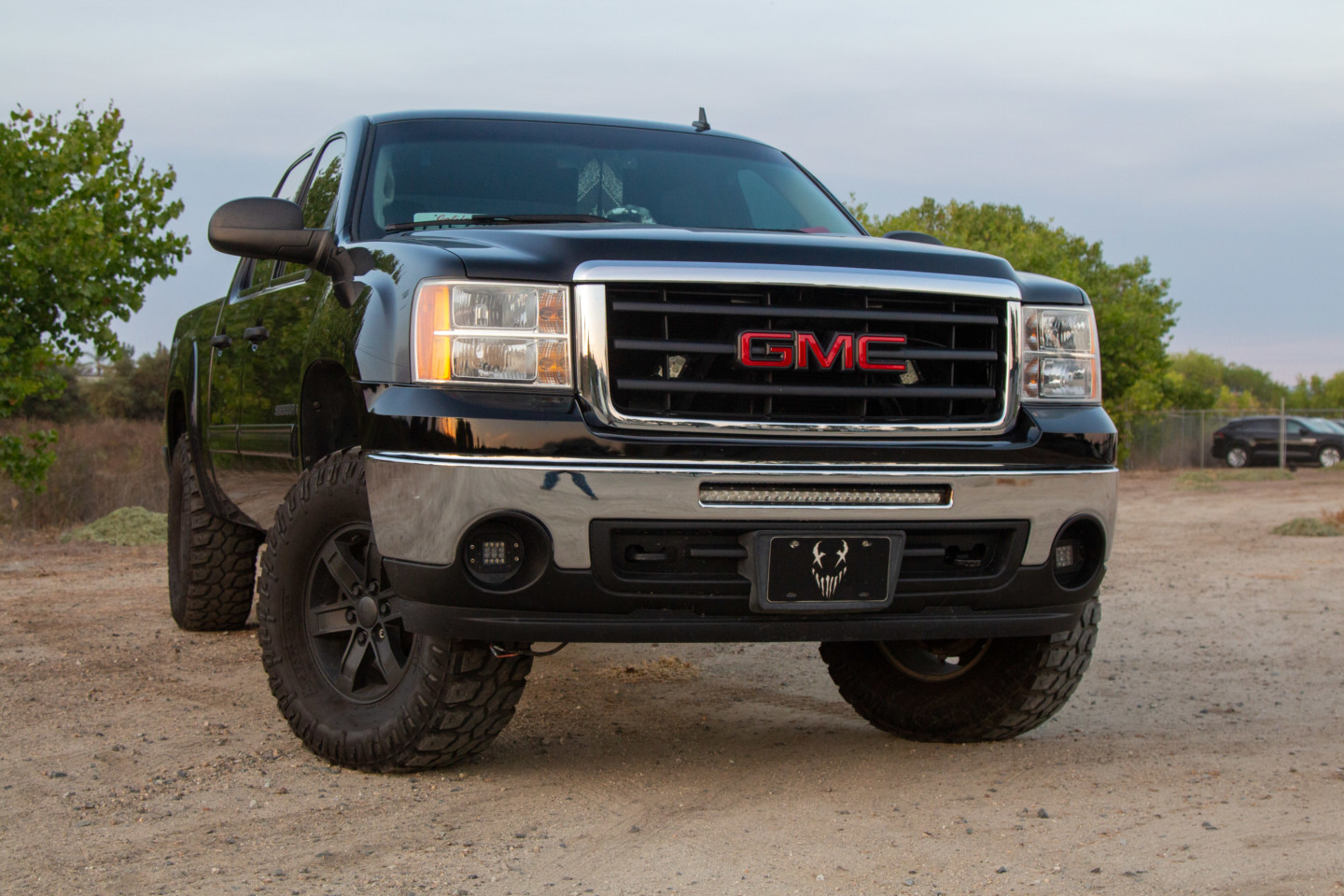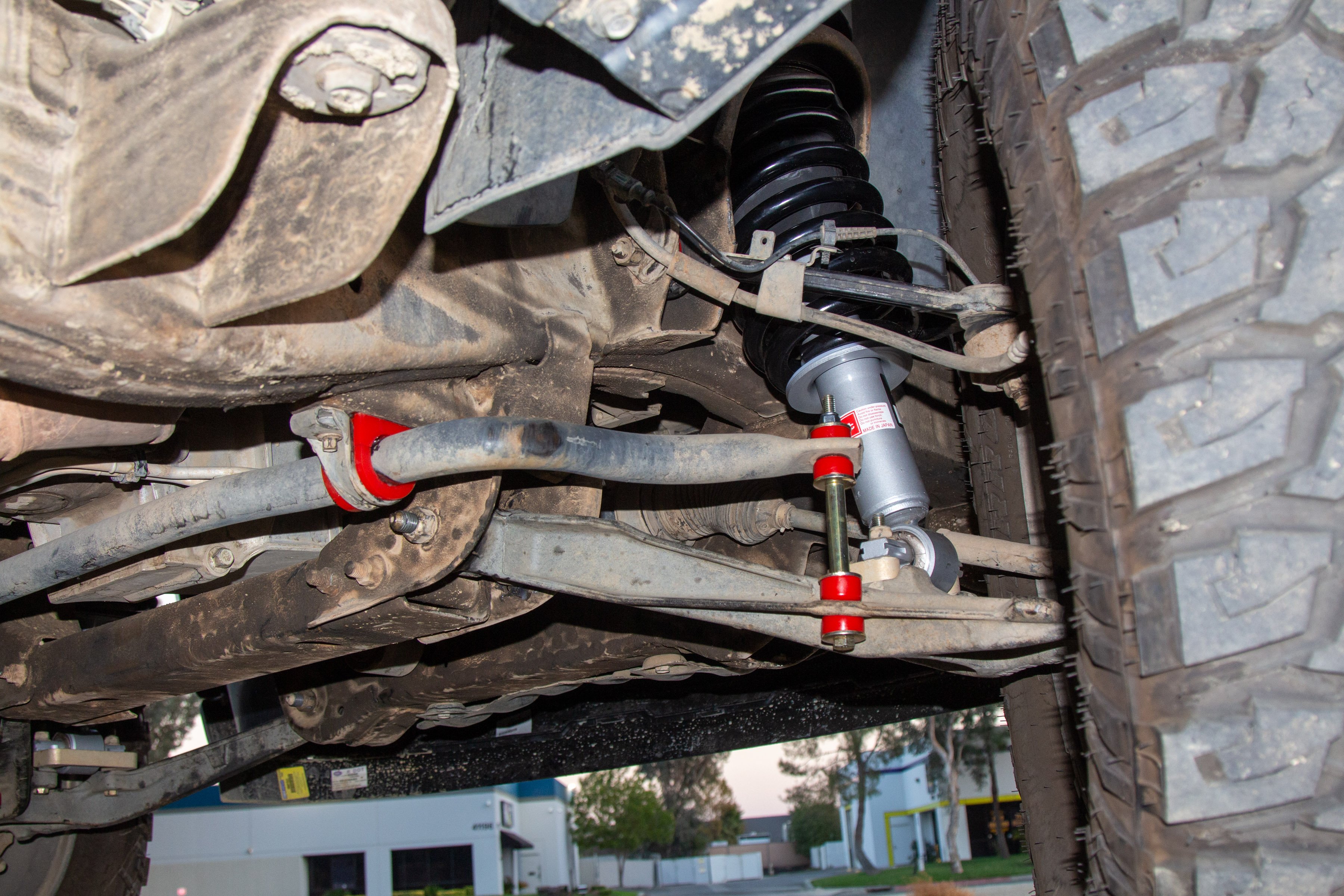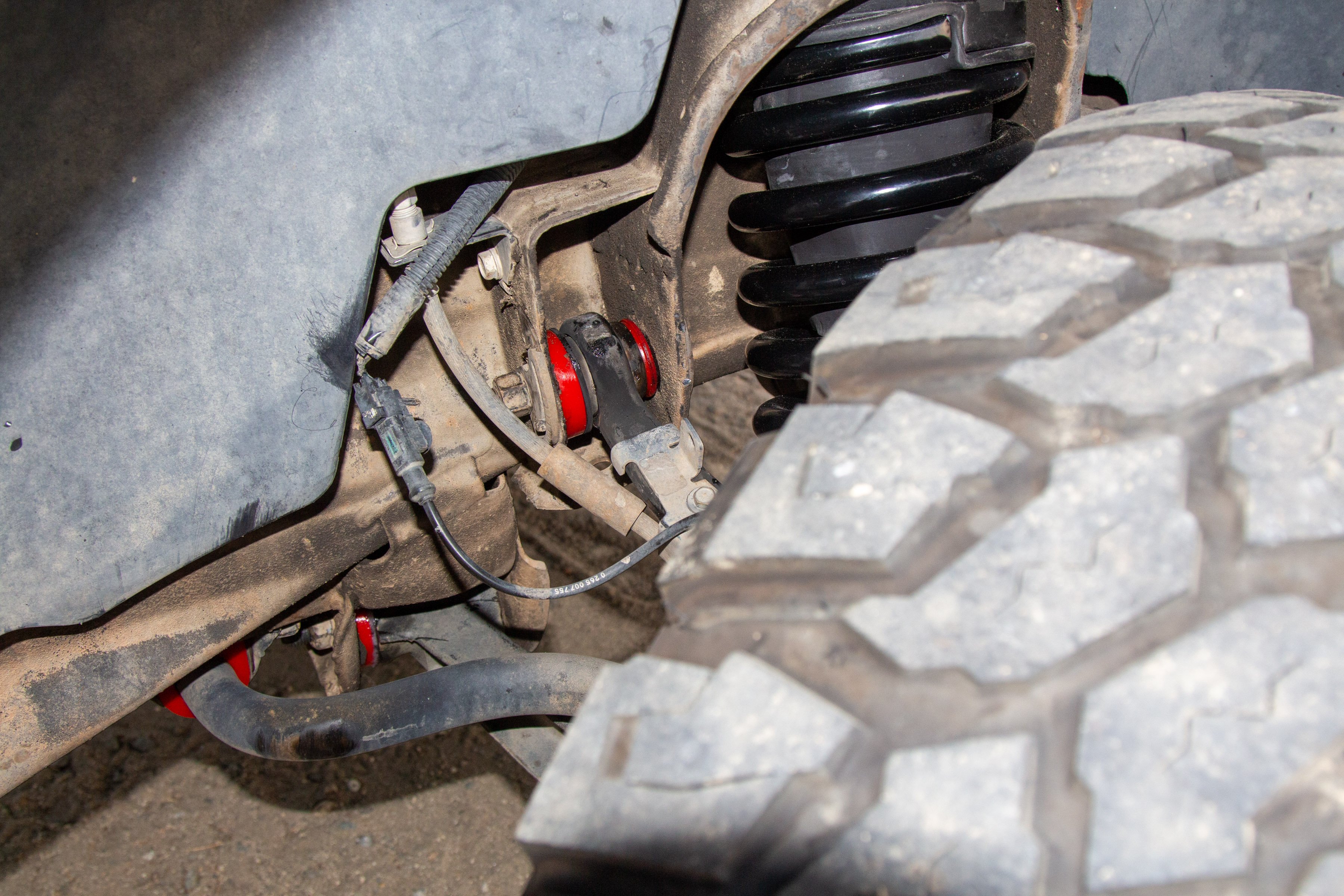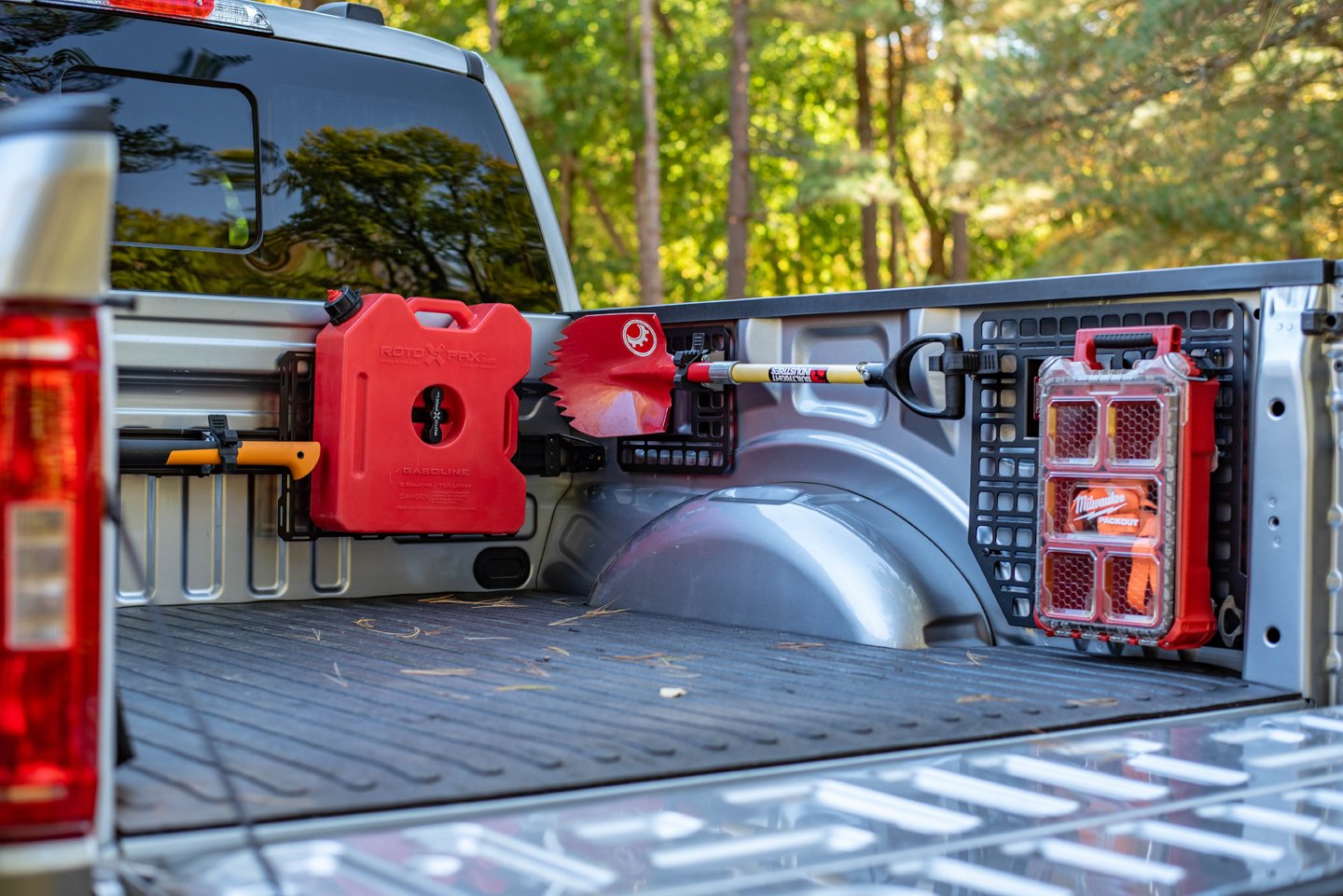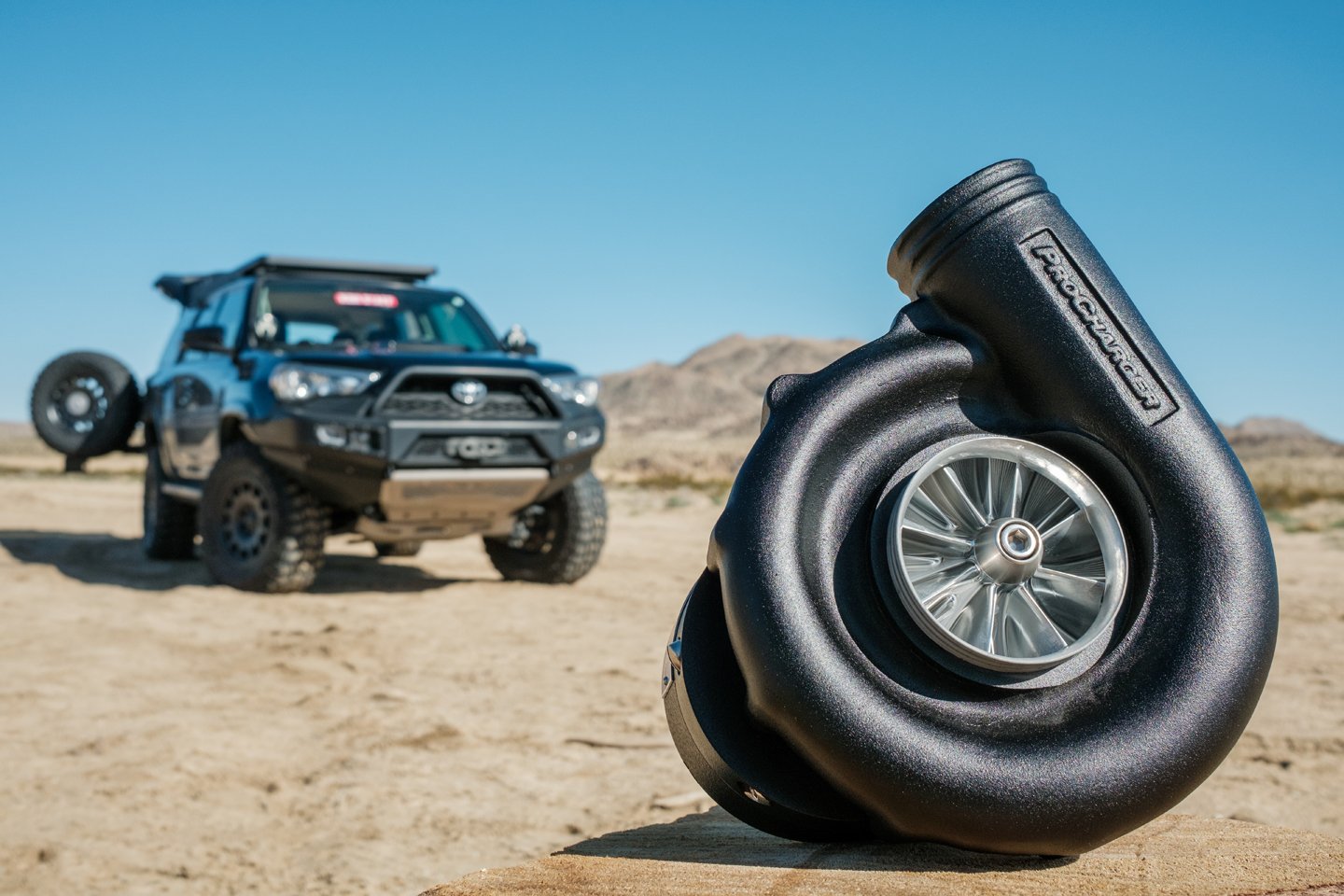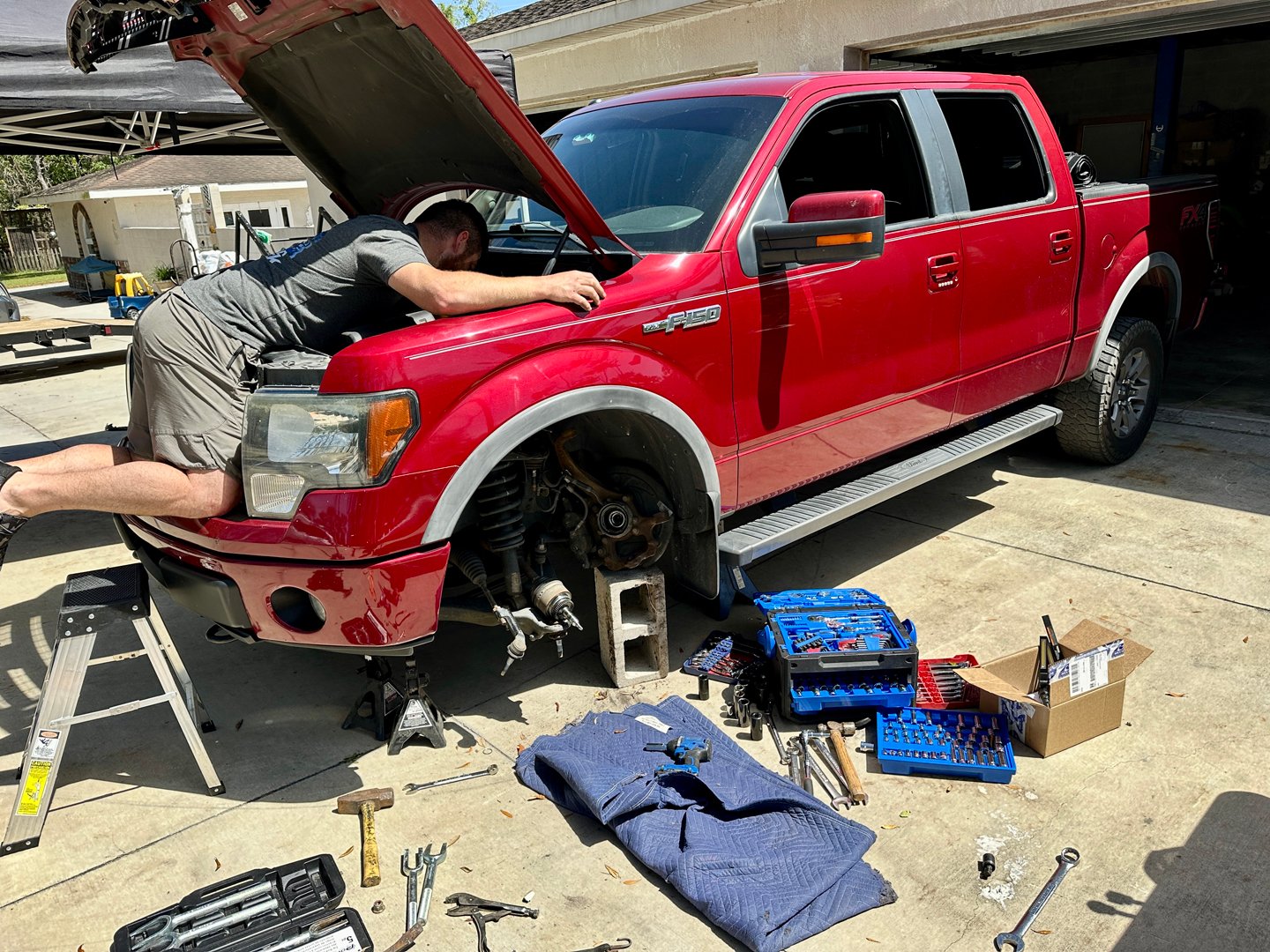It’s a shame not everything in this world can age like fine wine. When it comes to trucks, their suspension parts are susceptible to wear and tear. Such wear and tear isn’t immediately noticeable, but it can have far-reaching effects. And no suspension parts are more secretive about their degradation than bushings.
Tucked in the undercarriage and hidden behind metal, bushings are the silent workhorses of suspension. From the factory, OEMs use rubber as the primary component on all vehicles, and this material is prone to breakdown. And much like how ball joints can fail catastrophically without much forewarning, bushings can do the same.
To cure the ailment, we have to treat it directly. Enter PROTHANE, whose performance urethane (aka polyurethane) bushings are designed to supersede their rubber equivalents. We recently took the opportunity to use their parts on a 2009 GMC Sierra, showing signs of age and looking ready for a refresh.
Product Background
Before we got underway on the installation, we spoke with Art Niese, PR Manager for PROTHANE. He gave us the download on the nature of rubber bushings, how polyurethane bushings compare, and information on other topics relating to the installation.
Off Road Xtreme: As a bushing material, rubber is inherently prone to failing. Could you comment on how rubber bushings wear out over time and the importance of replacing them?
Art Niese, PROTHANE PR Manager: The vast majority of automotive suspension and chassis bushings delivered from the OEM factory are made of rubber. Some are well-made, others are poorly made. They have a low lifespan, crack and fail, and can get compressed or suffer from weakness.
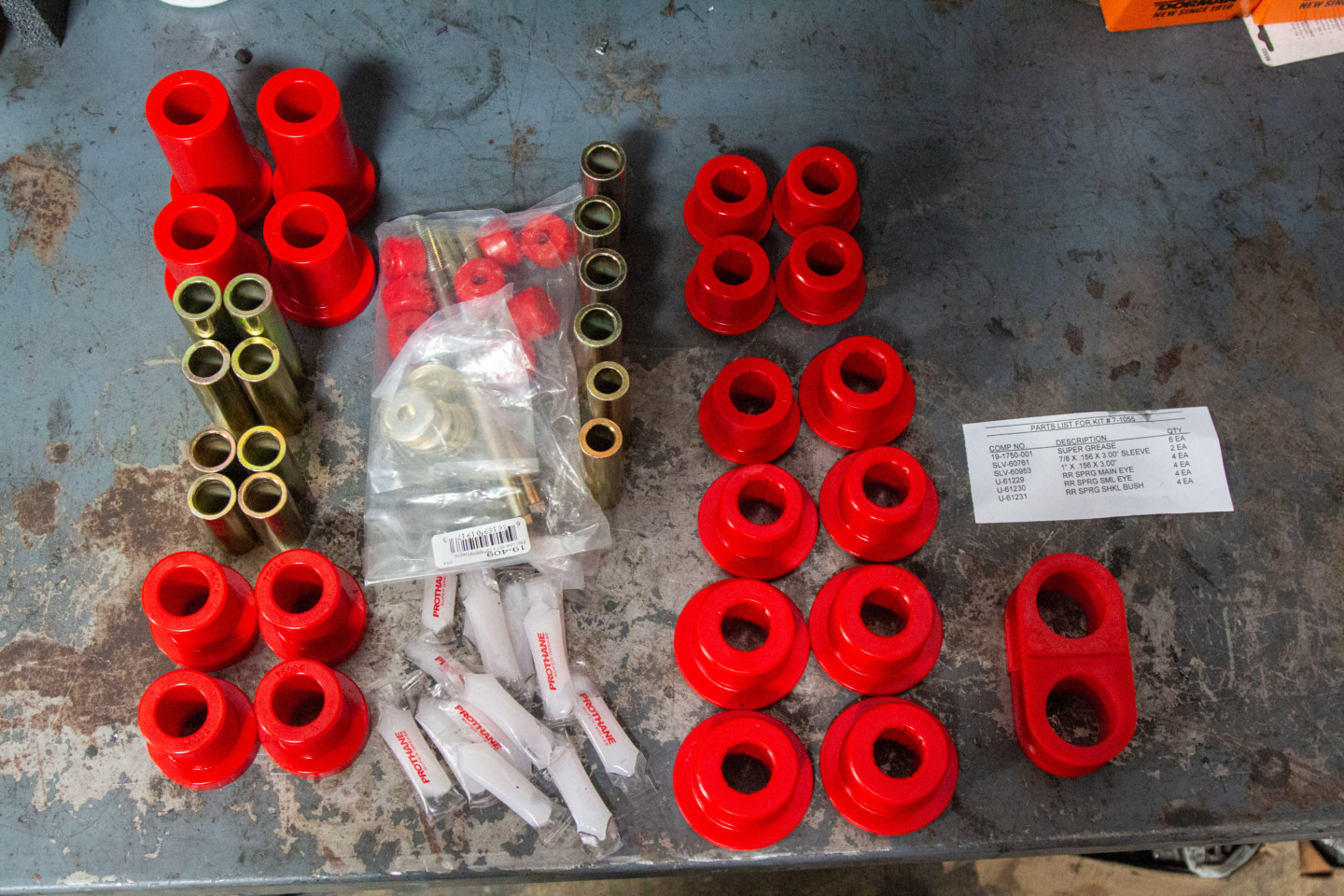
The chief difference in PROTHANE versus OEM bushings is the former’s use of polyurethane. This material is stronger and longer-lasting than rubber, which is what most factory vehicles use as bushing material.
PROTHANE recognized this problem and went into business to deliver performance urethane products. These bushings offer superior durability over time. They also offer higher durometer, or firmness, when appropriate for the vehicle application. The durometer change is carefully engineered to improve vehicle performance for auto enthusiasts that want to improve their vehicles. In some cases, PROTHANE components are used for various kinds of auto racing.
ORX: What advantage does polyurethane have over rubber?
AN: PROTHANE performance urethane is of the highest quality. It’s engineered to be more durable with both special urethane formulations and physical design attributes. When compared to rubber, urethane is inherently a superior material and lasts far longer than rubber. That is why PROTHANE offers a Limited Lifetime Warranty on all of their products.
ORX: We noticed that each set of bushings came with several tubes of grease. How does the included grease help PROTHANE bushings do their job?
AN: That is our PROTHANE “Super Grease” product lube. It comes in three-inch tubes or 14-ounce tubs. It is formulated to prevent vibrations and squeaking when urethane and metal are twisting in use. As part of their design, all PROTHANE bushings work in conjunction with the lube. This allows quiet and full floating suspension action on the bushing.
ORX: That’s good to know, but grease dissipates over time. How often should owners check their PROTHANE bushings and re-grease them?

To help keep their bushings running strong, PROTHANE includes several tubes of grease (above, middle).
AN: If the PROTHANE components are installed properly and the vehicle is not abused excessively, the Limited Lifetime Warranty is in effect. In the vast majority of cases, the vehicle owner will not have to service or replace the components. However, to improve lifespan, it is recommended that the vehicle owners re-grease them every few years or 25,000 miles. This will keep them from squeaking and wearing out.
Installation
To help us get the products installed, we went to NEXGEN Off-Road, a local off-road shop in Murrieta, California. These were the same guys that competed last year in our incredible Junkyard Challenge. Our friends at NEXGEN graciously offered to install three kits we ordered for the vehicle.
The work began by lifting the truck off the ground and removing all four tires. On deck were three kits to install – a front sway bar kit (PN 7-1193), control arm kit (PN 7-243), and a rear spring and shackle kit (PN 7-1055). Kris Steele (whom you may remember from Junkyard Challenge) took care of the hands-on work.
After removing the tires, Kris went to the front of the Sierra and began taking apart the hub assembly. Off came the tie rods, brakes, sensors, and other components. Our first order of business were the control arms.
On the lower control arms, Kris used an air gun and a heavy-duty clamp to sandwich the bushings. As the metal socket pressed on the bushing, the bushing emerged from the control arm safely. He did this for both bushings.
Kris removed the old bushings and installed the PROTHANE bushings on the lower control arms. He then reinstalled the arms onto the Sierra.
Kris then took the new bushings and brass sleeves. He applied a generous amount of grease on the outside and inside of the bushings, and did the same on the outside of the sleeves. He then used a plastic mallet to force the new bushings into the control arms. Once finished, he reinstalled the lower control arms. He then moved onto the upper control arms.
For the upper control arms, the instructions called for Kris to heat up the metal with a torch and burn out the old bushings. This would keep the metal sleeves there in place for perfect fitment with the PROTHANE bushings.
Accordingly, Kris brought the upper control arms outside and hung them on a rack. He used a Bernzomatic handheld torch to apply constant heat on the bushing sockets. After some time, smoke came out and the worn-out bushings began to burn. Kris blew out the flames and used a large pipe pliers to jar the bushing loose. The smoldering bushing came tumbling out.
Kris used a handheld torch to burn out the bushings on the upper control arms. Once they'd cooled off a bit, he pressed in the PROTHANE bushings and reinstalled the arms onto the Sierra.
Once the control arms had cooled down, Kris repeated the procedure as before. He coated grease on the bushings and sleeves, hammered them in, and reinstalled them onto the truck.
With the control arms taken care of, we moved onto the front sway bar. Our kit supplied us with bushings for both the end links and the bar itself.
New PROTHANE sway bar bushings were installed on the front.
Kris took care of the end links first. These were simple swaps. Kris undid the bolts and removed the end links, then popped on the new bushings. He then reinstalled the end links.
Next came the sway bar. Kris removed the bolts on either side and let the bar dangle down. The old bushings had already had a cutout, so they came off with little force. PROTHANE’s bushings used a similar cutout, so they easily popped onto the sway bar. Kris reinstalled the sway bar, and that was that.
Kris installed new PROTHANE bushings onto the leaf springs.
We were now on the home stretch of the install as we moved to the rear for the leaf springs. Due to time constraints, we assessed that we could only take care of the rear-most bushings. Kris got some help and removed the trailer hitch to gain access to the rear of the leaf springs.
With the leaf springs hanging down, Kris removed the shackle and pressed out the old bushings. He once again greased the PROTHANE bushings and installed them. The truck was now ready for the tires to go back on.
Restored
Victor’s truck is restored thanks to the new bushings from PROTHANE. While we didn’t replace every bushing on the truck, we did replace them in crucial areas that would benefit the vehicle in the long run.
The main takeaway is that performance urethane offers higher durability than OEM rubber. Even on a relatively newer truck like Victor’s, there were signs that the rubber was giving way. Cracks in the upper control arm bushings indicated their time was coming. Moving into performance urethane gives Victor the peace of mind that his components will keep on truckin’ for the lifetime of his vehicle.
With new bushings for the sway bar, control arms, and leaf springs, this Sierra is set to keep on running for the long haul.
If you’ve been neglecting bushings on your vehicle, it’s probably time to inspect them. PROTHANE offers bushings on countless makes and models, spanning the 1950s all the way to today. Go check out the official website, and don’t forget to follow PROTHANE on Facebook, too.
